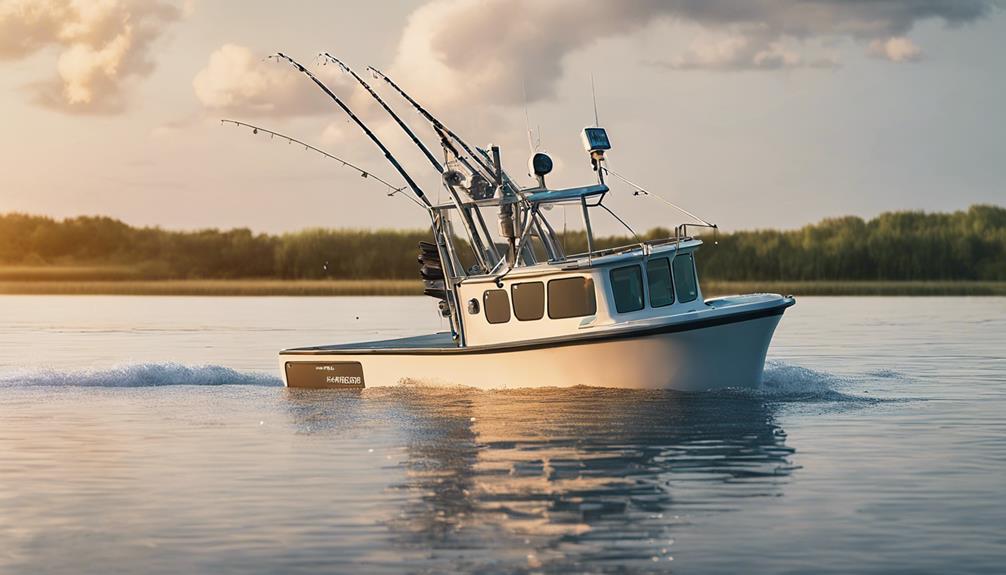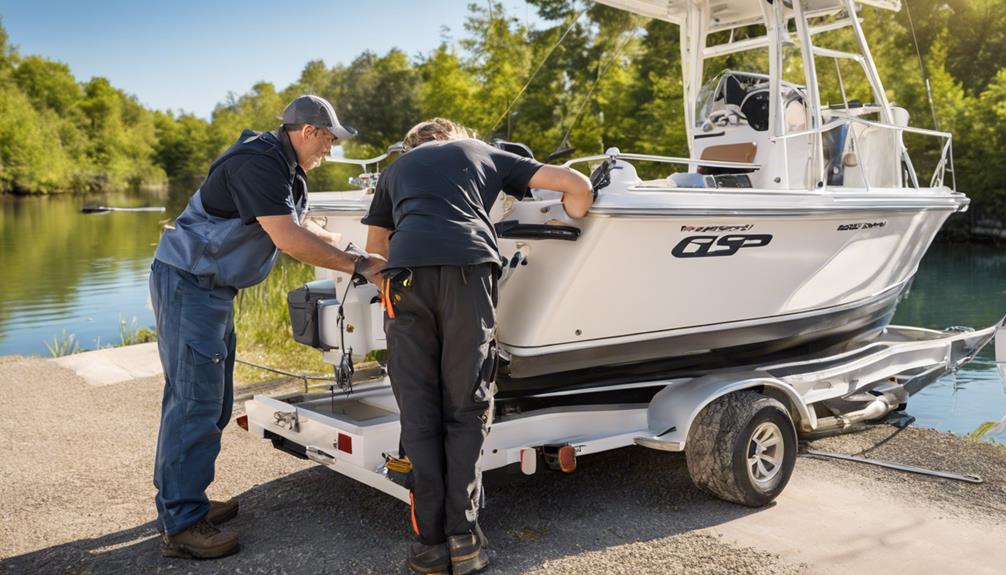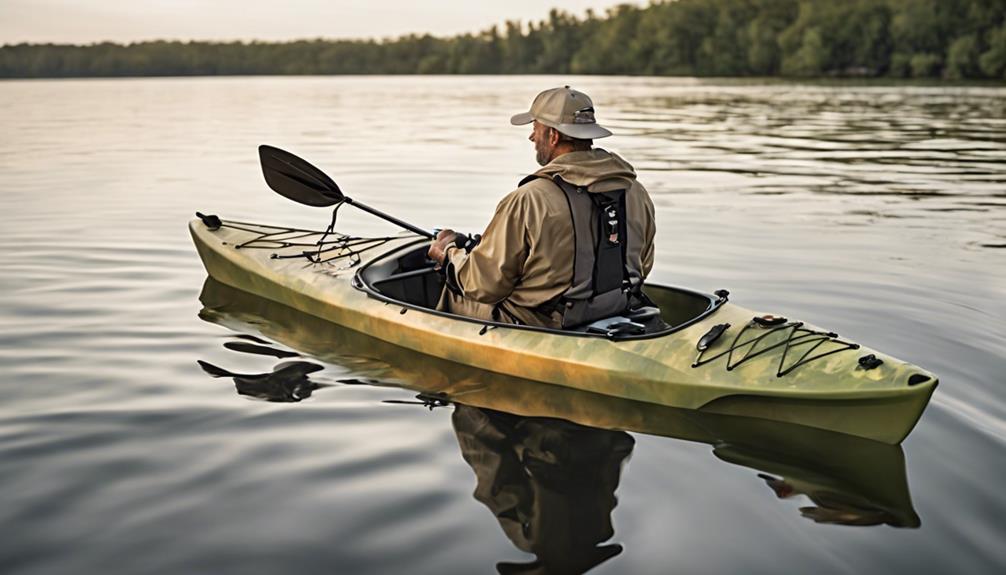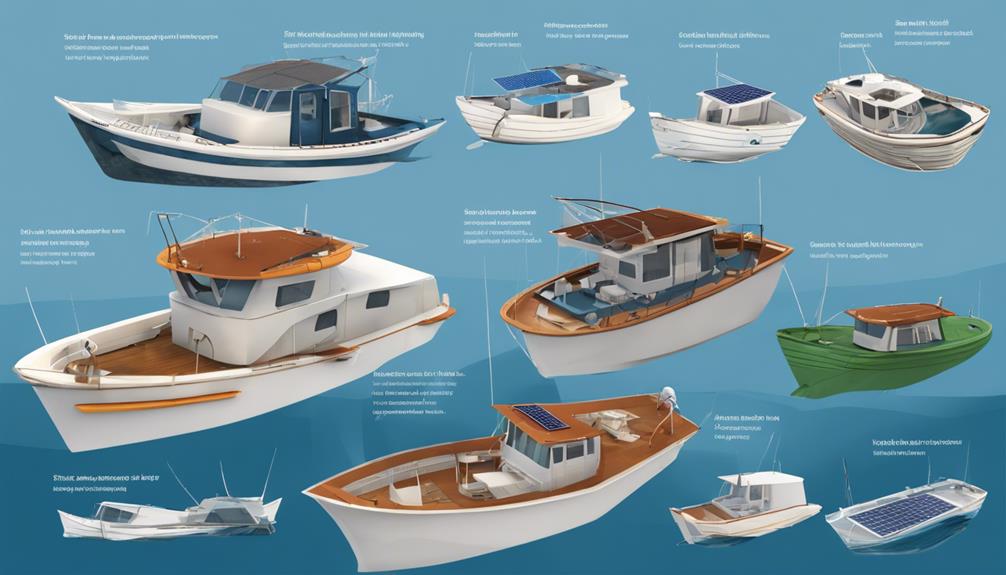Ensuring your live well is primed for peak performance is paramount for preserving your prized catch. From understanding the different types of live wells to implementing proper maintenance techniques, there's a plethora of factors to consider.
But have you ever pondered the impact of live well placement on your vessel's angling success? Stay tuned to uncover the strategic positioning that could be the missing link between a good day on the water and a great one.
Importance of Live Wells
Why are live wells crucial for the health of your catch while fishing? Fish health is paramount when it comes to successful angling, and one of the key factors in maintaining the well-being of your catch is the quality of the water they're kept in. Water quality plays a vital role in ensuring that fish remain healthy and lively until they're released back into their natural habitat.
When you catch a fish, the stress it experiences can have a significant impact on its overall health. Placing the fish in a live well with optimal water quality helps reduce this stress, giving the fish a better chance of survival once it's released. Properly oxygenated water, free from contaminants and at the right temperature, is essential for the fish to remain in good condition.
Live wells act as temporary sanctuaries for your catch, providing them with a safe environment where they can recover from the excitement of being hooked. By mimicking the fish's natural habitat as closely as possible, live wells help maintain the well-being of the fish until they're ready to be released. Ensuring that your live well is well-maintained and equipped with the necessary features to uphold water quality will greatly contribute to the health of your catch. Remember, a healthy fish population leads to more successful and sustainable fishing trips.
Types of Live Wells
Different types of live wells offer various features and benefits for maintaining the health of your catch while fishing. When considering a live well for your fishing boat, it's crucial to think about live well filtration, monitoring, insulation, and circulation.
Live well filtration is essential for keeping the water clean and free from debris that can harm your catch. Some live wells come equipped with advanced filtration systems that ensure the water quality remains optimal throughout your fishing trip. Monitoring systems are also available in certain live wells, allowing you to keep an eye on water temperature, oxygen levels, and overall fish behavior.
Insulated live wells are designed to regulate water temperature, keeping it stable to prevent shock to the fish. This feature is especially important when fishing in extreme weather conditions. Additionally, live well circulation plays a key role in maintaining oxygen levels and ensuring that the water is properly aerated. Proper circulation helps prevent fish stress and keeps them healthy until it's time for release.
When choosing a live well for your fishing boat, consider the type that best suits your needs based on these key features. Whether you prioritize filtration, monitoring, insulation, or circulation, selecting the right live well can make a significant difference in the well-being of your catch.
Proper Live Well Maintenance
To ensure the longevity and effectiveness of your live well, implementing proper maintenance practices is crucial. Establishing a regular cleaning schedule is essential to prevent the buildup of algae, bacteria, and other contaminants that can harm your live well's ecosystem. You should thoroughly clean your live well after each use to remove any debris, fish waste, or leftover bait that could degrade water quality and endanger the health of your catch.
In addition to regular cleaning, conducting routine water quality testing is imperative. Use test kits to monitor levels of ammonia, nitrites, nitrates, and pH to ensure that the water conditions are optimal for the fish. High levels of ammonia or nitrites can be toxic to fish, while fluctuations in pH can stress them. By regularly testing the water quality, you can address any issues promptly and maintain a healthy environment for your catch.
Developing a cleaning schedule and regularly testing the water quality are simple yet effective maintenance practices that can significantly impact the performance of your live well. By staying proactive and attentive to the cleanliness and water conditions of your live well, you can ensure that your fishing trips are successful and that your catch remains healthy throughout the day.
Aeration Systems for Live Wells
When considering aeration systems for your live well, prioritize selecting a model that suits the size and capacity of your fishing boat. Proper aeration is crucial to maintain optimal oxygen levels in the water, ensuring the health and vitality of the fish you catch. An efficient aeration system promotes water circulation, preventing the buildup of harmful chemicals like ammonia and keeping the water fresh.
To enhance oxygen levels in your live well, look for aeration systems that provide adequate oxygenation for the volume of water in your specific live well. Some aeration systems use air stones or diffusers to create bubbles that increase the surface area of the water in contact with the air, facilitating oxygen exchange. These systems are effective in aerating the water and ensuring your catch remains lively and healthy throughout your fishing trip.
Moreover, consider aeration systems that offer adjustable settings to control the level of aeration based on the number and size of fish you plan to keep in the live well. By regulating the aeration levels, you can maintain optimal oxygen saturation without causing unnecessary stress to the fish. Remember, proper aeration not only boosts oxygen levels but also promotes water circulation, creating a healthy environment for your prized catches.
Choosing the Right Size
Choosing the right size of aeration system for your live well is essential to ensure optimal oxygen levels and water quality for your fish. When selecting the appropriate size, consider the following factors:
- Fish Species Compatibility: Different fish species have varying oxygen requirements, so it's crucial to choose an aeration system that can meet the needs of the specific fish you plan to keep in your live well. Proper oxygen levels are vital for the health and well-being of your fish.
- Live Well Capacity: The size of your live well will dictate the amount of oxygen needed to maintain suitable conditions for your fish. Ensure that the aeration system you choose can effectively oxygenate the entire volume of water in your live well to prevent stress or harm to your catch.
- Maintenance Requirements: Opt for an aeration system that not only provides proper filtration and water circulation but also is easy to maintain. Regular maintenance is key to ensuring the longevity and efficiency of your aeration system, ultimately benefiting the health of your fish.
Live Well Placement on Boat
Positioning your live well strategically on your boat can significantly impact the efficiency of your aeration system and the well-being of your fish. When considering live well placement, prioritize accessibility and space. Your live well should be easily reachable for quick access to your catch without disrupting your fishing flow. Placing it near your fishing station or within arm's reach ensures convenience and minimizes stress on the fish during handling.
Additionally, the organization and design of your live well play a crucial role in maintaining a healthy environment for your catch. Make sure the live well is well-designed with rounded corners to prevent fish from getting injured. Proper filtration and aeration systems should be incorporated to keep the water oxygenated and clean, promoting fish vitality.
Consider the layout of your boat when deciding on the placement of your live well. It should be positioned in a way that doesn't obstruct movement on the deck and maintains a balanced weight distribution. By having a well-thought-out live well setup, you can enhance your overall fishing experience and ensure that your catch remains in optimal condition throughout your trip.
Stocking Live Wells With Bait
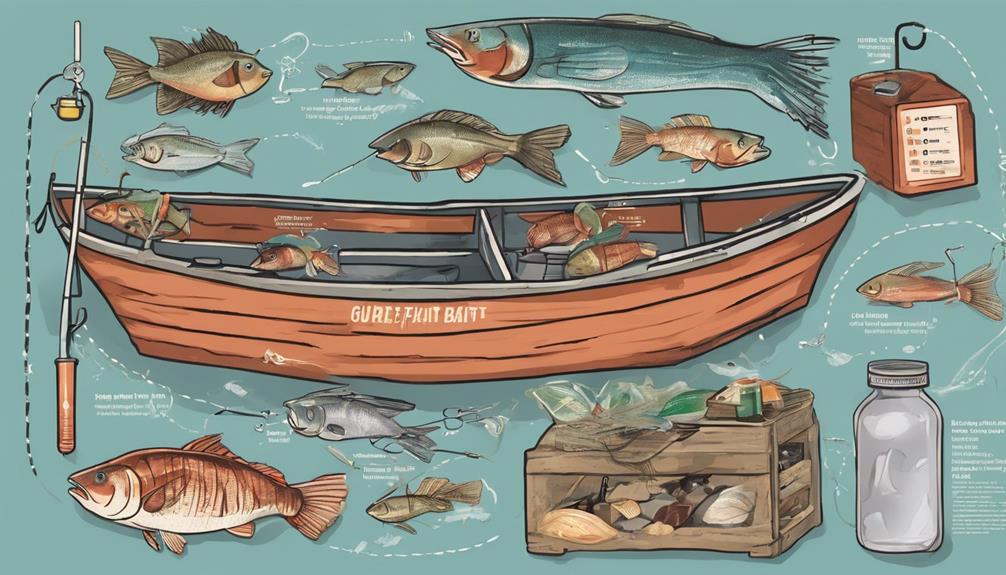
To ensure the well-being of your catch and maintain a thriving environment, stocking your live well with appropriate bait is essential. When it comes to stocking your live well with bait, there are a few key points to keep in mind:
- Bait Selection:
- Choose bait that's suitable for the type of fish you're targeting. Different species have different preferences, so it's crucial to select bait that will attract the fish you aim to catch.
- Fresh bait is generally more appealing to fish and can increase your chances of a successful fishing trip.
- Additionally, consider the size of the bait in relation to the size of the fish you're targeting.
- Storage:
- Proper storage of bait is vital to ensure its effectiveness.
- Make sure the bait is stored in a cool and aerated environment to maintain its freshness.
- Avoid exposing the bait to direct sunlight or extreme temperatures, as this can affect its quality.
- It's also essential to regularly check the bait for any signs of spoilage and replace it as needed.
- Temperature Regulation, Monitoring:
- Monitor the temperature of the water in your live well regularly.
- Fish are sensitive to temperature changes, so it's crucial to maintain a stable and suitable temperature for the species you're targeting.
- Use a thermometer to monitor the water temperature and adjust as necessary to keep the fish comfortable and healthy.
Tips for Keeping Fish Healthy
Ensure the health of your fish by maintaining a clean and well-oxygenated environment in your live well. Proper fish handling is crucial for their well-being. When handling fish, make sure your hands are wet to avoid damaging their protective mucous layer. Avoid using towels or dry hands as they can remove this layer, making the fish more susceptible to infections. Additionally, try to handle fish as little as possible and release them gently back into the water to reduce stress.
Monitoring water quality is essential for keeping fish healthy in your live well. Regularly check and maintain the appropriate water temperature, pH levels, and oxygen saturation. High ammonia levels can be harmful to fish, so ensure proper filtration and water circulation to keep these levels in check. Remember to dechlorinate the water before adding fish to the live well to prevent any chlorine-related issues.
Properly aerating the water in your live well is vital for the health of your fish. Make sure the aerator is functioning correctly and providing enough oxygen to keep the fish lively and active. Consider using additives like stress coat solutions to help reduce fish stress and promote healing of any minor injuries that may occur during fishing. By following these tips for fish handling and maintaining water quality, you can ensure the well-being of the fish in your live well.
Frequently Asked Questions
What Are the Benefits of Using Additives or Chemicals in a Live Well to Keep Fish Healthy?
When fishing, adding chemicals to your live well can benefit fish health. These additives help maintain water quality, reducing stress on fish. However, be cautious as some chemicals may have risks.
Some additives could harm fish or even contaminate the environment. So, it's essential to research and choose safe products to ensure the well-being of your catch and the aquatic ecosystem.
How Often Should the Water in a Live Well Be Changed During a Day of Fishing?
Throughout a day of fishing, ensure water quality in the live well by monitoring it regularly. To prevent fish stress, change the water based on the number of fish caught and their size.
A good rule of thumb is to change the water every 2-3 hours. This practice helps maintain optimal conditions for your catch, ensuring their health and vitality while out on the water.
Are There Any Specific Regulations or Guidelines for Using Live Wells in Certain Bodies of Water?
When using live wells in different bodies of water, it's vital to follow specific regulations and guidelines. These rules are in place to protect the environment and promote conservation practices.
Ensuring proper water quality in live wells is crucial for the well-being of the fish. By adhering to best practices, you can minimize the environmental impact of using live wells while also maintaining optimal conditions for the fish you catch.
What Are Some Common Mistakes Anglers Make When Using Live Wells That Could Harm the Fish?
When using live wells, anglers often make mistakes that harm fish. Poor temperature control can stress the fish, impacting their health.
Overcrowding is another problem that can lead to fish being injured or even dying.
Neglecting water quality by not changing it regularly can also harm the fish in your live well.
Be mindful of these factors to ensure the well-being of the fish you catch.
How Can You Tell if the Aeration System in Your Live Well Is Not Functioning Properly?
If your live well's aeration system is malfunctioning, there are signs to watch for. Fish may appear stressed, gasping at the surface, or swimming sluggishly. The water might look cloudy or have a foul odor. Without proper aeration, fish health suffers.
Regularly checking your system ensures optimal conditions. Additives can help, but a functioning aeration system brings the most benefits, keeping your catch healthy and lively.
Conclusion
Make sure to optimize your live wells in your fishing boat to keep your catch healthy and fresh.
By understanding the importance of live wells, proper maintenance, choosing the right size, and stocking with bait, you can ensure your fish stay lively throughout your fishing trip.
Don't forget to invest in aeration systems and strategically place your live wells on your boat for maximum efficiency.
Happy fishing!
